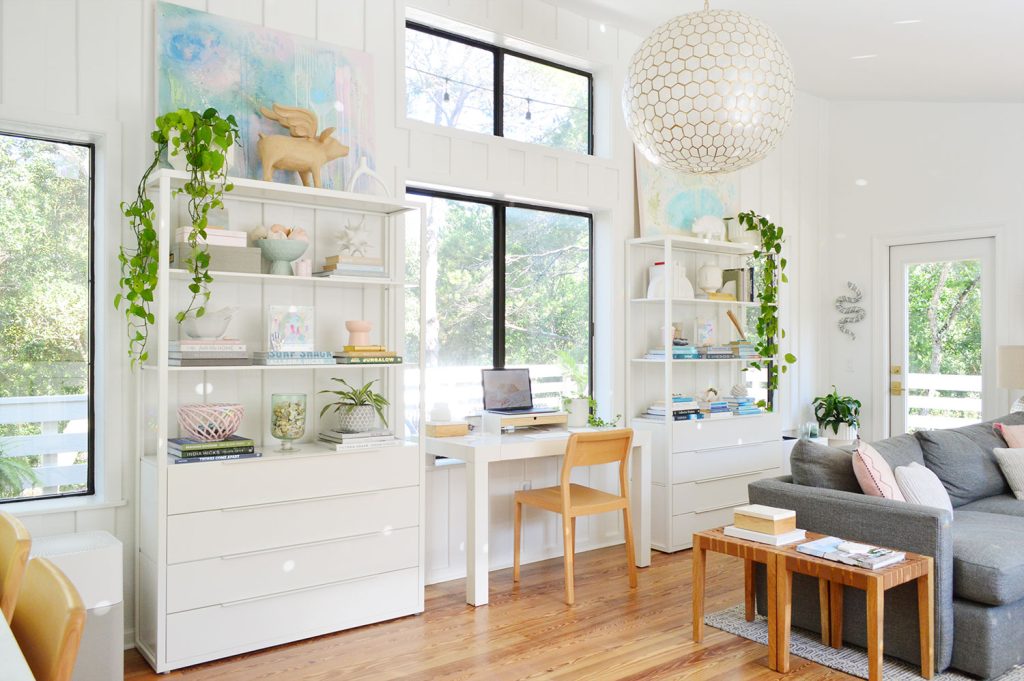We scoured 100+ white paint colors featured on more than a dozen “best white” lists to determine what are truly the most universally loved white paints. I even made a spreadsheet! These are the 12 colors that came up over & over again. They’re trusted by everyone from interior designers & architects to builders & bloggers alike. So let’s dive into why experts recommend them and how you can pick the right white paint color for your home.

White is a classic choice for trim, ceilings, and even cabinets. But white paint on your walls? That’s when the strong opinions come out! Critics write off white walls as basic or boring. But they can be a smart, classic choice that’s both timeless and on-trend. We personally love them. Here are some reasons why:
- White walls are supportive: White walls serve to highlight other points of interest in a space, like artwork, furniture, decor, accent walls, or even the view outside.
- White walls are brightening: One of the most obvious perks is that light paints – especially white – can help brighten spaces, making them feel larger or more expansive.
- White walls are versatile: They work with just about any interior design style: traditional, cottage, farmhouse, modern, and more.
- White walls are flexible: If you’re the type to constantly tweak a room, white walls make it easier to introduce new colors, patterns, and textures without having to repaint the whole space.
- White walls are dynamic: As lighting changes in a room, white paint can shift its appearance more than darker or more saturated colors. This makes them challenging to choose, but interesting to live with.
What Are The Best White Paint Colors?
These are the 12 white paints that were most cited on the lists we cataloged. We looked at round-ups everywhere from from home decor magazines, DIY websites, and individual experts and influencers like Martha Stewart and Shea McGee. We’ll discuss each in more detail later in the post, but if you came here for the list, here it is!
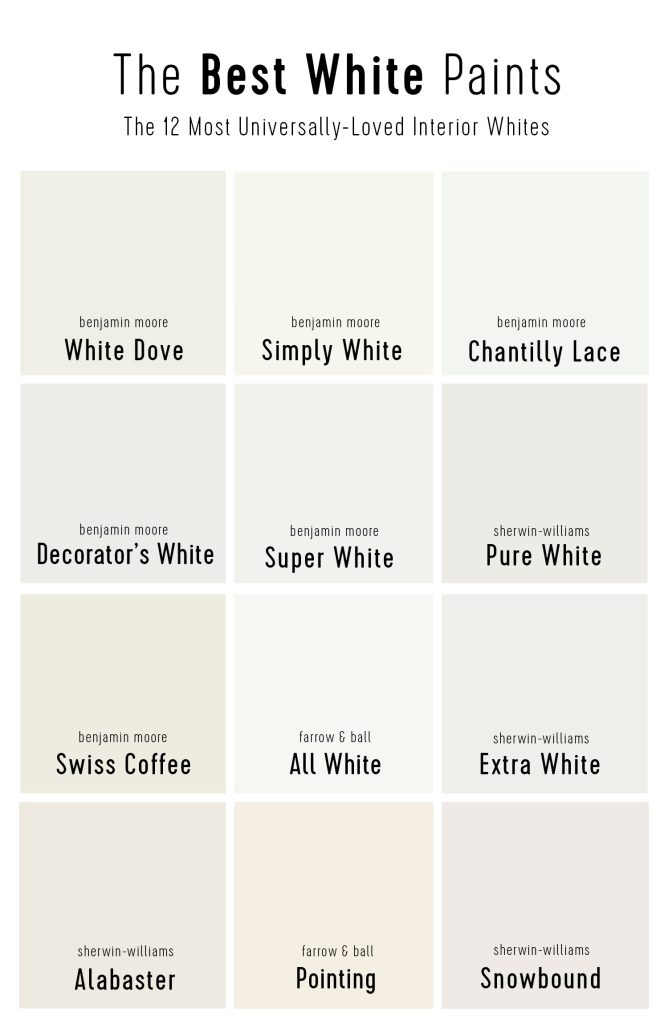
Note: The swatches in this post are taken directly from each paint manufacturer’s website. These are imperfect digital approximations of each paint color, but we find them to be the best apples-to-apples way to discuss paint online. We encourage you to view physical swatches of any color before painting.
These 12 Best Whites are presented in order, starting with the ones that appeared on the most lists. In fact, the first three showed up on nearly ALL of the lists.
- Benjamin Moore White Dove (OC-17)
- Benjamin Moore Simply White (OC-117)
- Benjamin Moore Chantilly Lace (OC-65)
- Benjamin Moore Decorator’s White (OC-149)
- Benjamin Moore Super White (OC-152)
- Sherwin-Williams Pure White (SW 7005)
- Benjamin Moore Swiss Coffee (OC-45)
- Farrow & Ball All White (No. 2005)
- Sherwin-Williams Extra White (SW 7006)
- Sherwin-Williams Alabaster (SW 7008)
- Farrow & Ball Pointing (No. 2003)
- Sherwin-Williams Snowbound (SW 7004)
Knowing the top 12 is a great starting point, but narrowing it down to the right one for you takes a bit more understanding of how white paints work.
How To Choose The Right White Paint
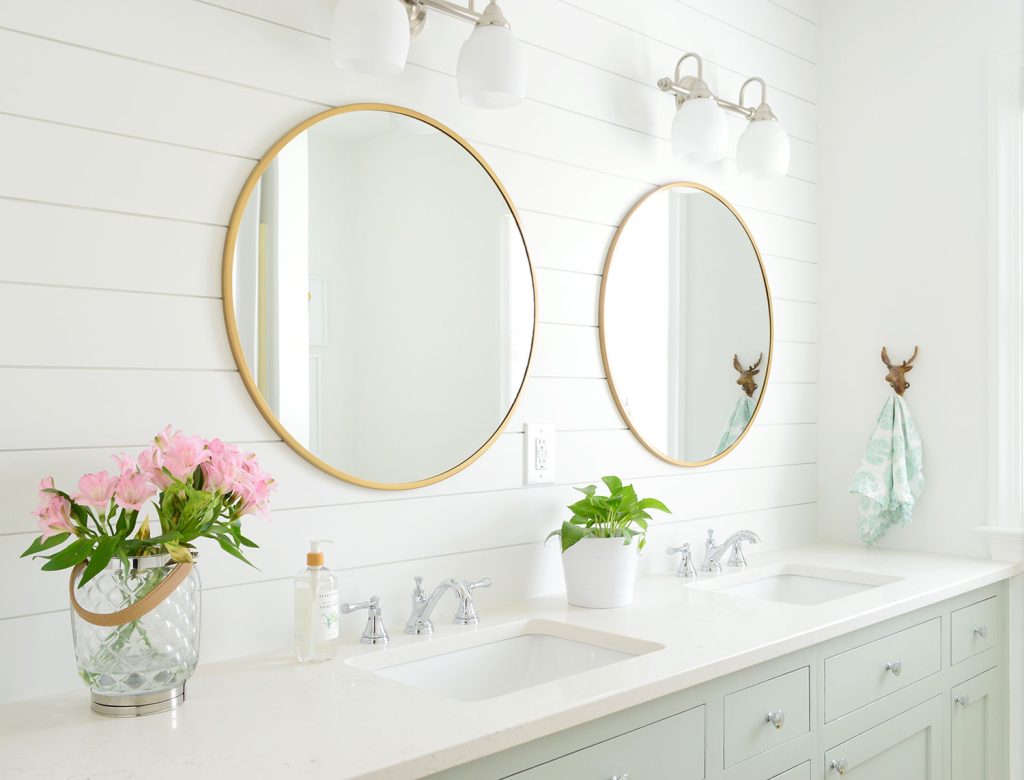
The best way to pinpoint the perfect white for your home is to understand the subtle nuances between them, specifically brightness and undertones. These terms are useful when picking any paint color, but they’re especially important when discussing white tones.
What is LRV?
LRV stands for Light Reflectance Value. It’s a standardized way to measure the brightness of a paint color. LRV represents the percentage of light that a paint color reflects ranging from 0 (absolute black) to 100 (pure white). The higher the LRV number, the brighter the paint. Below you can see a range of popular paint colors and their LRVs.
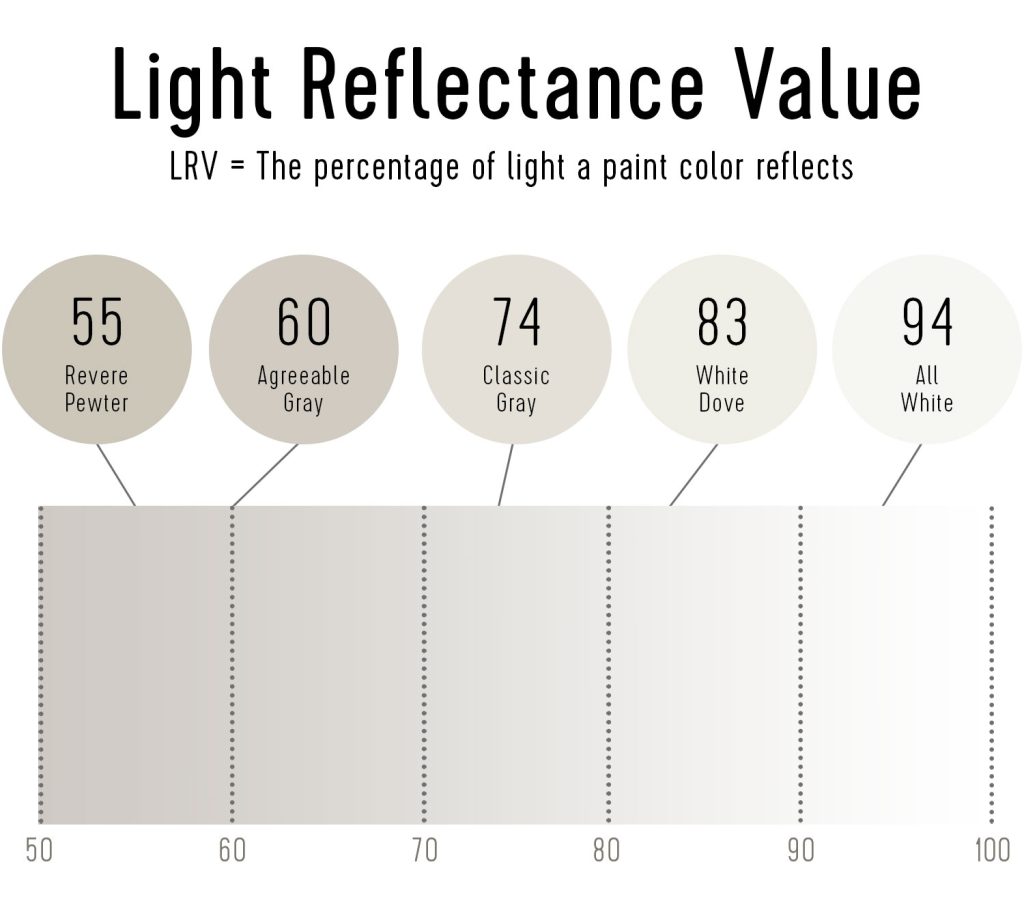
Most white paints fall in the 80-95 LRV range. Any higher and the white would be too blinding. Anything lower starts to look more gray, beige, or “greige.” We’ve charted the 12 best white paints below so you can see where each lands on the LRV scale.
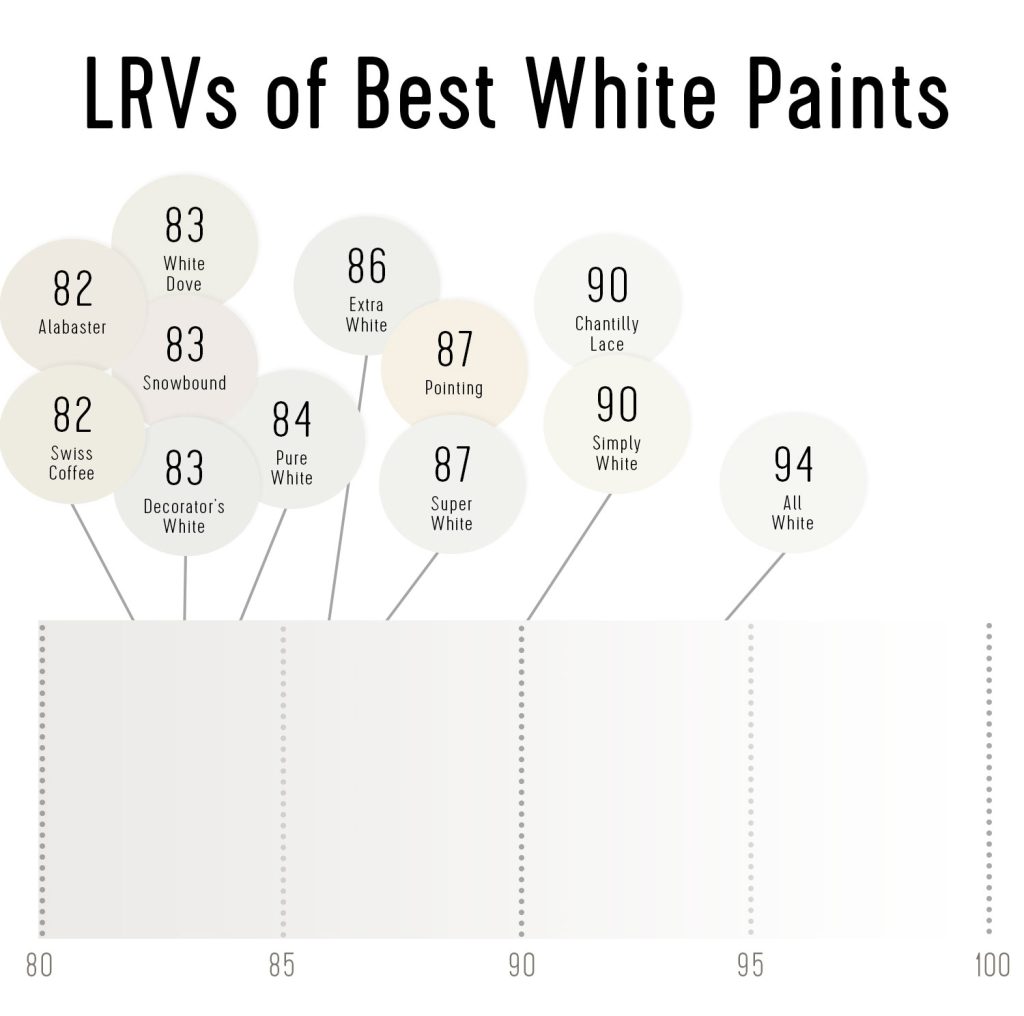
Key Takeaway: Many of the most trusted white paints aren’t as white as their names suggest (Ultra! Super! Extra!). Many could even be considered very, very light greiges. This may surprise you. But it illustrates that when choosing white paint for a home, brighter doesn’t always mean better. Truly! People often regret choosing something that’s way too bright, which can make soft white furniture and curtains look yellow by comparison – so that’s something to be aware of.
Using LRV to Pick a White Paint
Relying on your eyes to compare the brightness of white paint colors can be tricky. Especially since most paint decks and store displays don’t arrange white tones according to brightness (like they do with other hues). That’s why LRV is a useful way to compare whites against one another. If a white color looks too dark in your space, find one with a higher LRV. If it looks too bright, go with a lower LRV.
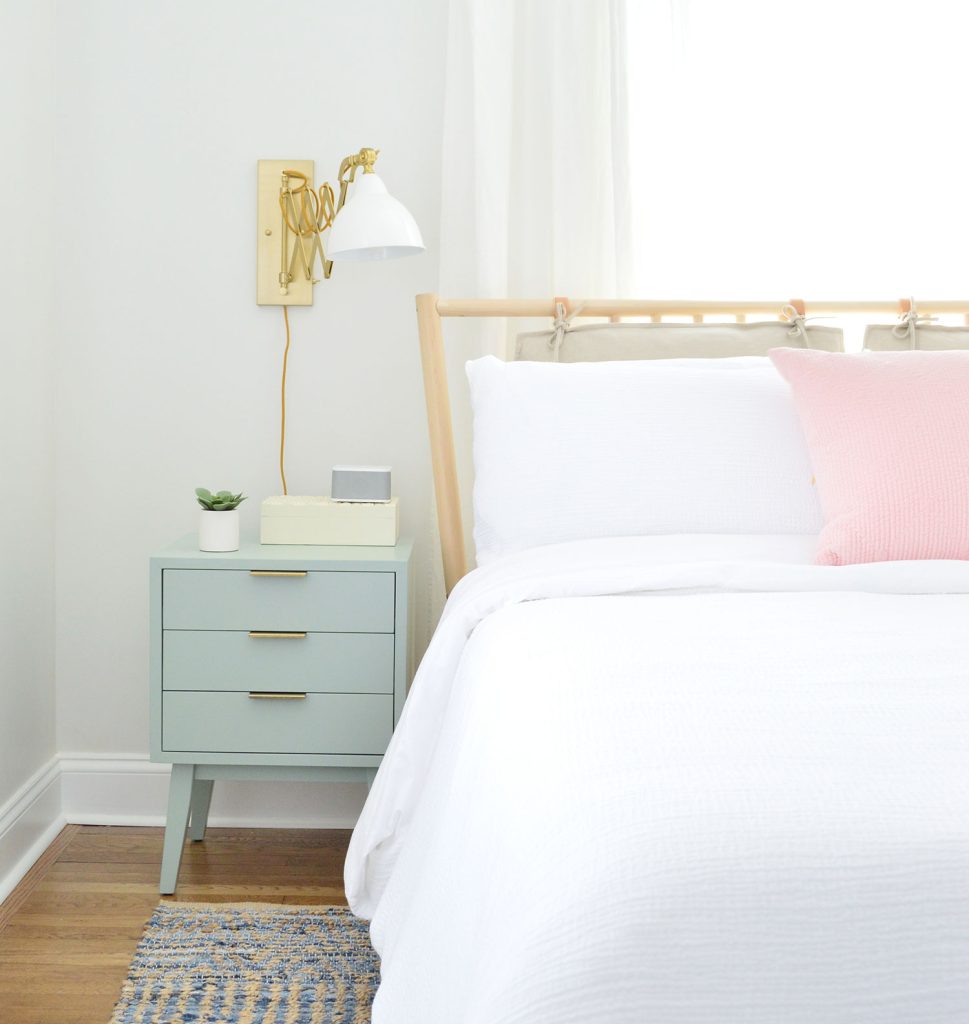
Knowing LRVs is also helpful when pairing two white tones in one room. For instance, in the room pictured above, we wanted some subtle contrast between the walls and the trim. The paints we chose both have “white” in their names – SW Spare White on the walls with SW Extra White on the trim. Confusing, right? But Spare White has an LRV of 77, almost 10 points lower than Extra White’s 86. Knowing this made us confident it would give us the subtle contrast we were seeking, and it did.
What Are Undertones?
Undertones are the subtle secondary hues in a specific color. They’re typically described as being either “warm” or “cool,” as shown below. Undertones can be present in any color, but they’re especially important to understand when discussing whites or grays. Warm whites can end up looking cream or beige. Cool whites can become gray or blue.
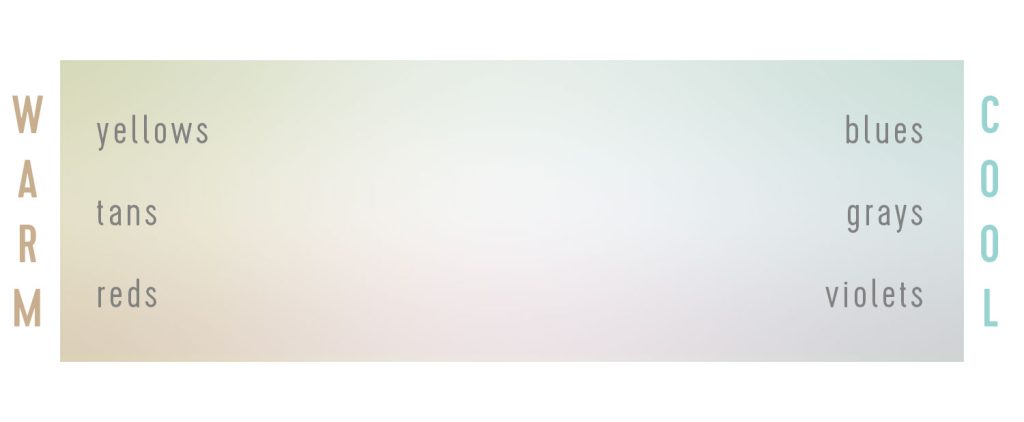
Undertones can be hard to identify. They can also be incredibly subjective because your perception of them changes based on surrounding factors too, like lighting and other colors in a space.
One of the best ways to see a white paint’s undertone is by comparing it to others. In isolation, many white paint swatches appear completely “neutral.” But when they’re seen in a group you can tell which ones look yellower, greener, redder, etc. We’ve done our best to place this list’s 12 white paints on a spectrum of warm-to-cool undertones below.
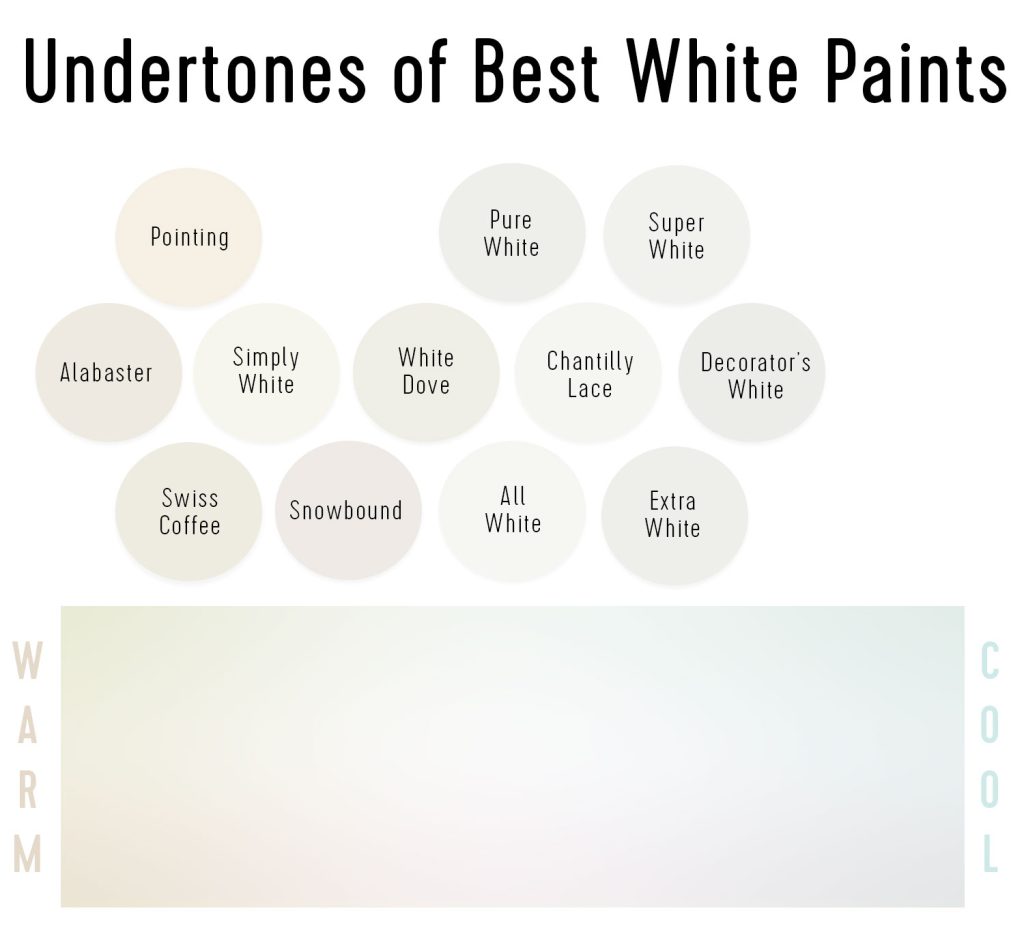
Key Takeaway: Most experts favor warmer whites with slight yellow, red, or tan undertones. This is likely because cool whites can end up looking stark, sterile, or gray on your walls. This is not a universal rule, but we found it interesting how many of these best whiles had warmer undertones.
Using Undertones to Pick a White Paint
Deciding between a warm, cool, or neutral white is sometimes just a personal preference. You may want the coziness of a creamy warm white. Or perhaps you prefer a crisp cool white that feels more lively. However, you should also consider factors in your room like existing colors and lighting, which can also be cool or warm. You can see below how a specific white paint’s appearance can change throughout the day:
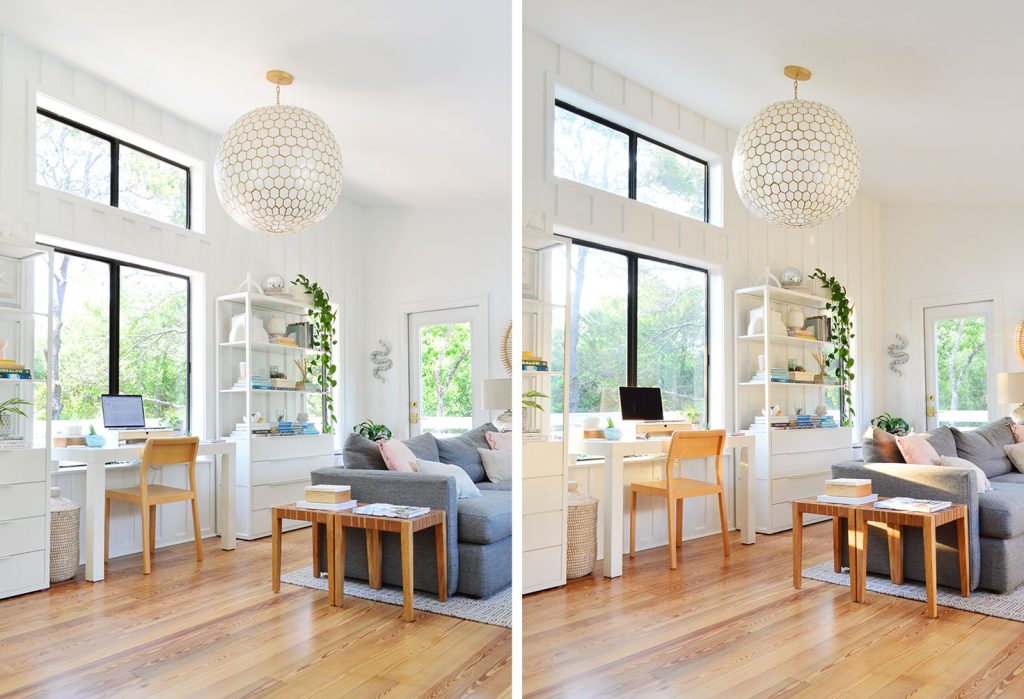
Generally, you want your white paint to complement any existing undertones, but it can also be used to counterbalance them. Just be careful because undertones can easily clash. That’s why it’s always important to test paint swatches in a room first. It’s also interesting to note that our favorite white paint color (seen above in our family room) is more of a cool undertone color on the grid of paint colors I made, yet in certain times of day it appears much warmer. Imagine how much warmer one of the more warmer toned whites would look in that room at that time of day!
Tips for Testing White Paint Colors
It’s best to test a new color before you paint a whole room (or house!) with it. No amount of expert recommendations can guarantee that a specific white paint color will look good in YOUR space based on YOUR lighting and YOUR tastes. Here’s how we recommend you test any paint:
Collect LOTS of swatches from the paint store. Gather more swatches than just the 12 colors listed here. Bring home alternatives that are darker, lighter, grayer, yellower, etc. than you think you want. This will give you more tones to compare against and ultimately choose your favorite.
Order removable sticker samples. Once you’ve narrowed your options, use a site like Samplize to order large pre-painted swatches. The cost is comparable to getting sample-sized paints mixed, but the removable stickers save you from making a mess. We’ve linked each color on this list below. You can also get most of them (plus some extras) by ordering the Warm White or Cool White bundles.
- BM White Dove sample sticker
- BM Simply White sample sticker
- BM Chantilly Lace sample sticker
- BM Decorator’s White sample sticker
- BM Super White sample sticker
- SW Pure White sample sticker
- BM Swiss Coffee sample sticker
- FB All White sample sticker
- SW Extra White sample sticker
- SW Alabaster sample sticker
- FB Pointing sample sticker
- SW Snowbound sample sticker
View samples on various walls, in various lighting scenarios. Take your time with your samples. Look at them during the morning, afternoon, evening, and in artificial light to evaluate brightness and undertone. Try them on different walls in a room too. They can also be stuck to cabinets, trim, or other surfaces you might want to paint.
If this isn’t enough to pick a final color, you can paint a large swatch directly on your wall, but we guess you won’t need this step.
The 12 Best White Paint Colors
Now that you understand how to evaluate white paints, let’s take a closer look at the white paints that experts turn to again and again. They are listed in order of how frequently they appeared, beginning with the most often cited at the time of writing this post:
Benjamin Moore White Dove (OC-17)
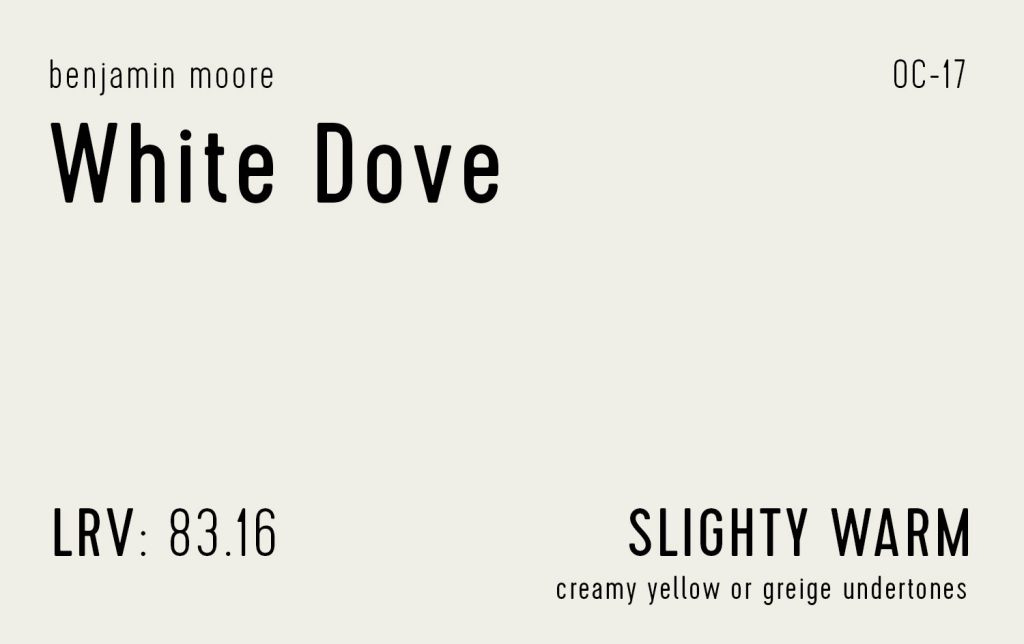
BM White Dove tops this list for good reason. It’s a crowd-pleasing interior white that works on just about any surface: walls, trim, ceilings, cabinets, etc. White Dove’s subtle warmth keeps it from being too stark or bright, while still achieving a clean, pure white look on your walls. It’s very similar to Sherwin-Williams Pure White (which is also on this list – and is a personal favorite of ours – in fact, it’s what we used as our whole-house white).
Benjamin Moore Simply White (OC-117)
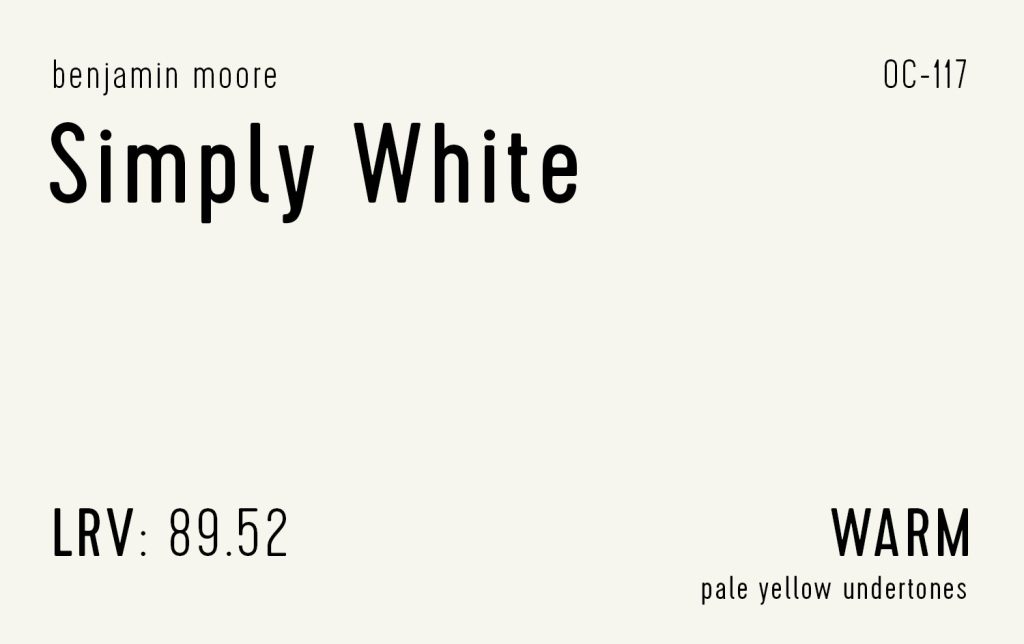
BM Simply White is bright white that we’ve used as a whole-house trim color with great success. We’ve also used it on walls and built-ins to brighten up and add warmth to dark rooms, like in our living room below from our previous house. For years, Simply White was our favorite white paint color.
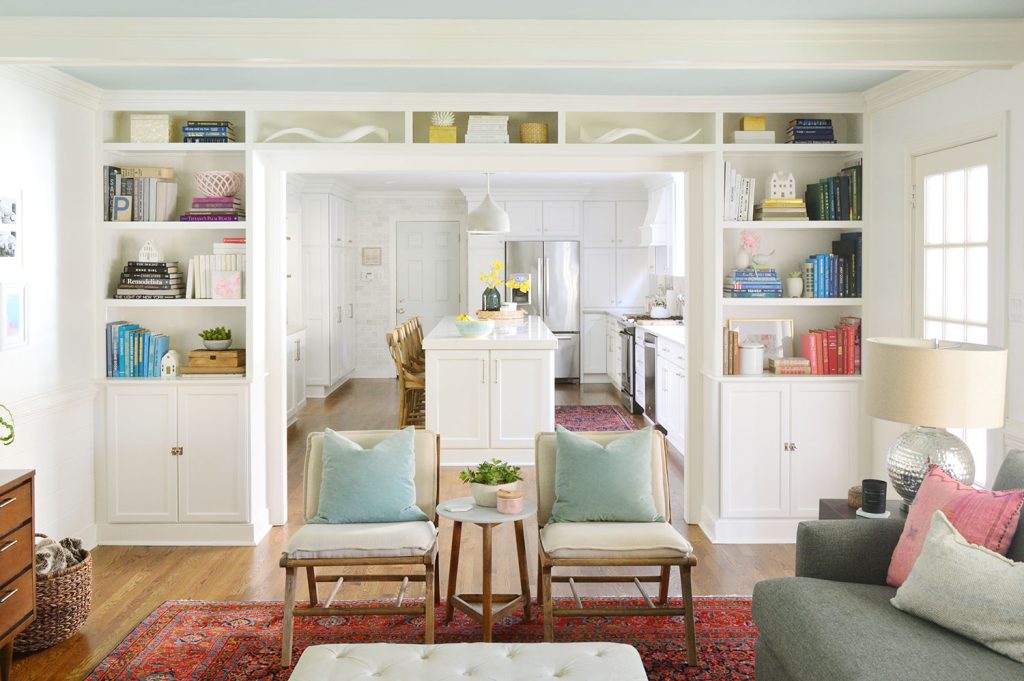
It does have a visible yellow undertone that is a pro for some people, but a con for others. We discuss this more in our honest review of Simply White. Ultimately for us, it’s what moved us to prefer Pure White, which is what we painted our entire current house.
Benjamin Moore Chantilly Lace (OC-65)
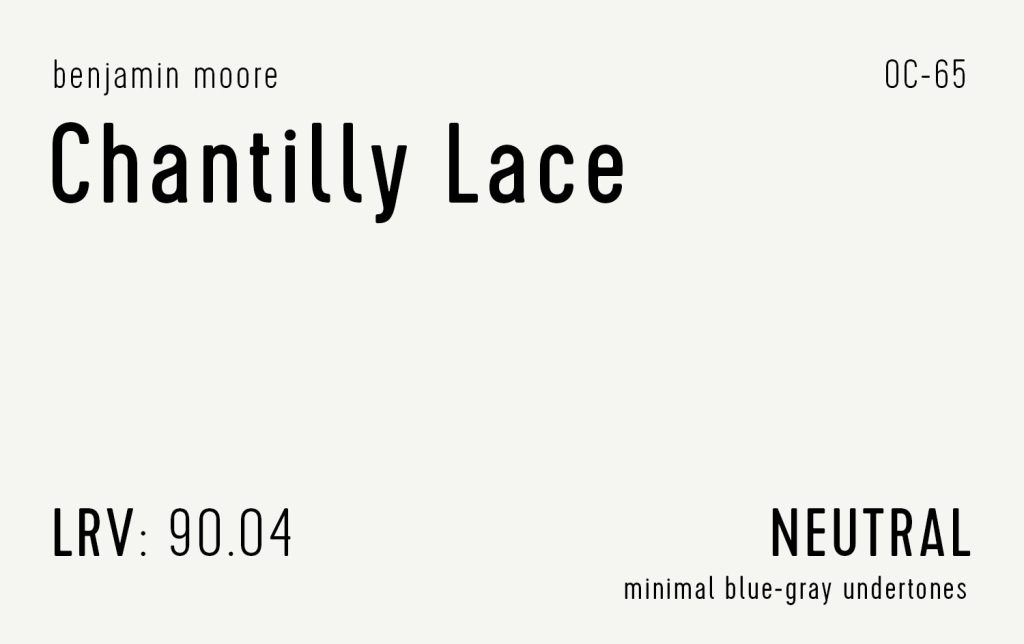
BM Chantilly Lace is kind of like Simply White without the warm undertones. Benjamin Moore even considers Chantilly Lace to be one of its “whitest whites.” The other, Super White, is also on this list. It’s an especially great choice for trim, ceilings, or moldings because it contrasts nicely against a wide range of darker whites, grays, and greiges.
Benjamin Moore Decorator’s White (OC-149)
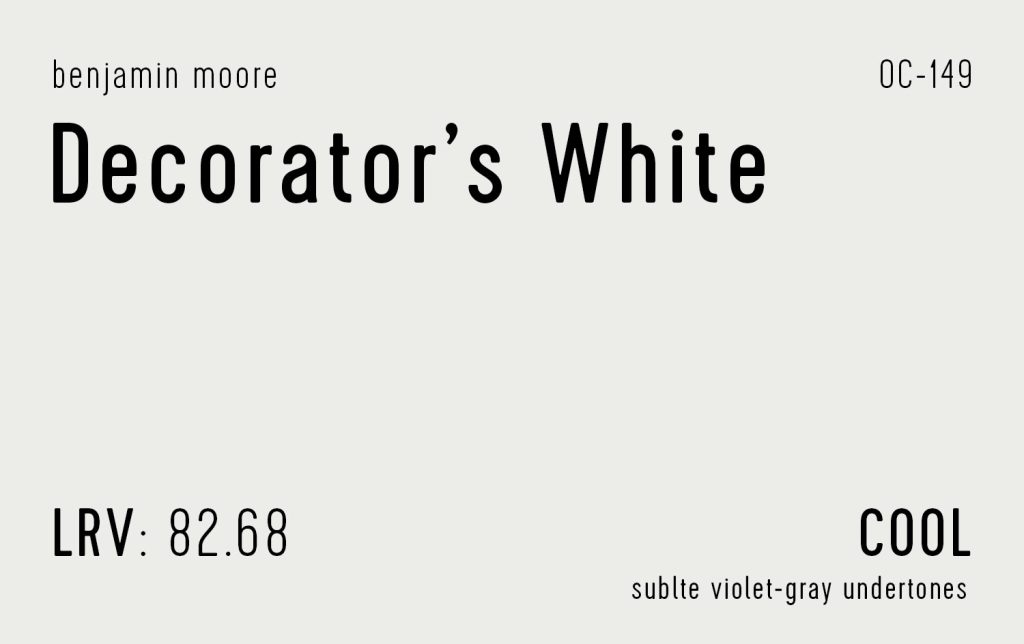
BM Decorator’s White is a cool undertoned alternative to the top pick on this list, BM White Dove. They both fall in that great 82-84 LRV range that’s bright, but not too bright on walls. Consider this if your room has cool undertones in your existing decor or gets a lot of natural sunlight.
Benjamin Moore Super White (OC-152)
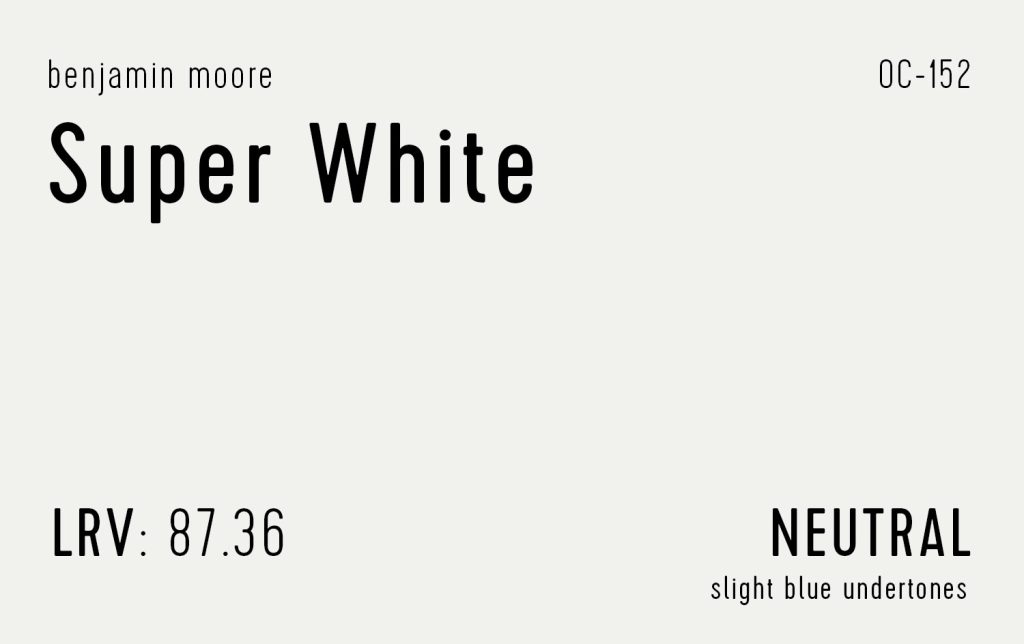
BM Super White is a bit darker than Benjamin Moore’s other “whitest white,” Chantilly Lace, but also has the same near-invisible undertones. The two would work well as a wall + trim combination if you’re looking for a very subtle contrast. Super White also works great as a trim color itself, as well as for other moldings or built-ins that you want to have that classic white look.
Sherwin-Williams Pure White (SW 7005)
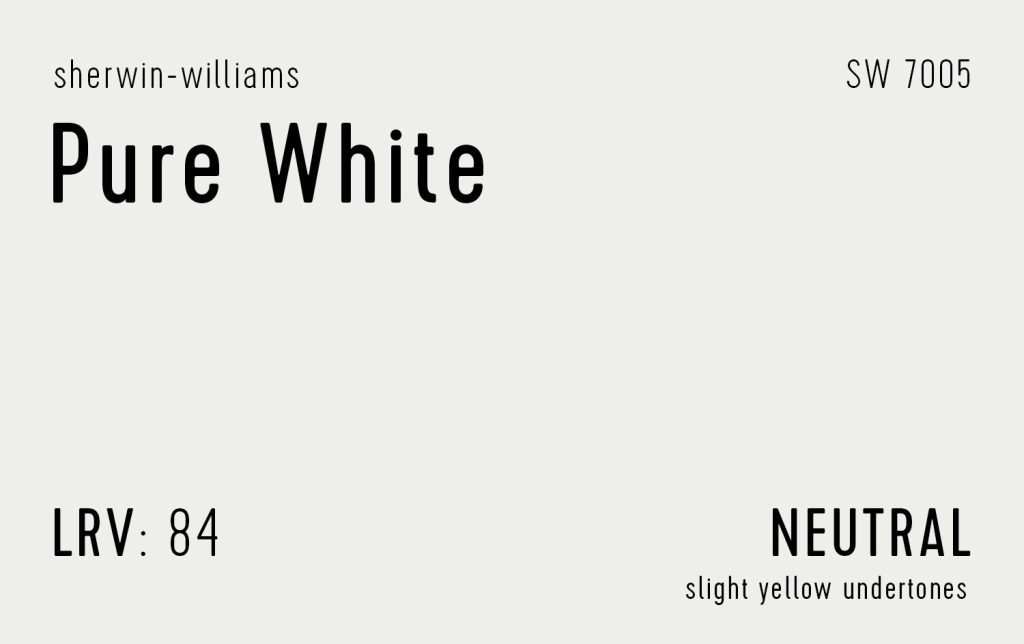
SW Pure White is the first Sherwin-Williams paint on this list, and we consider it to be a close match to the top pick, BM White Dove, especially if want something with a less warm undertone. We currently use Pure White as our whole-house white (walls! trim! ceilings! doors!) and we love it.
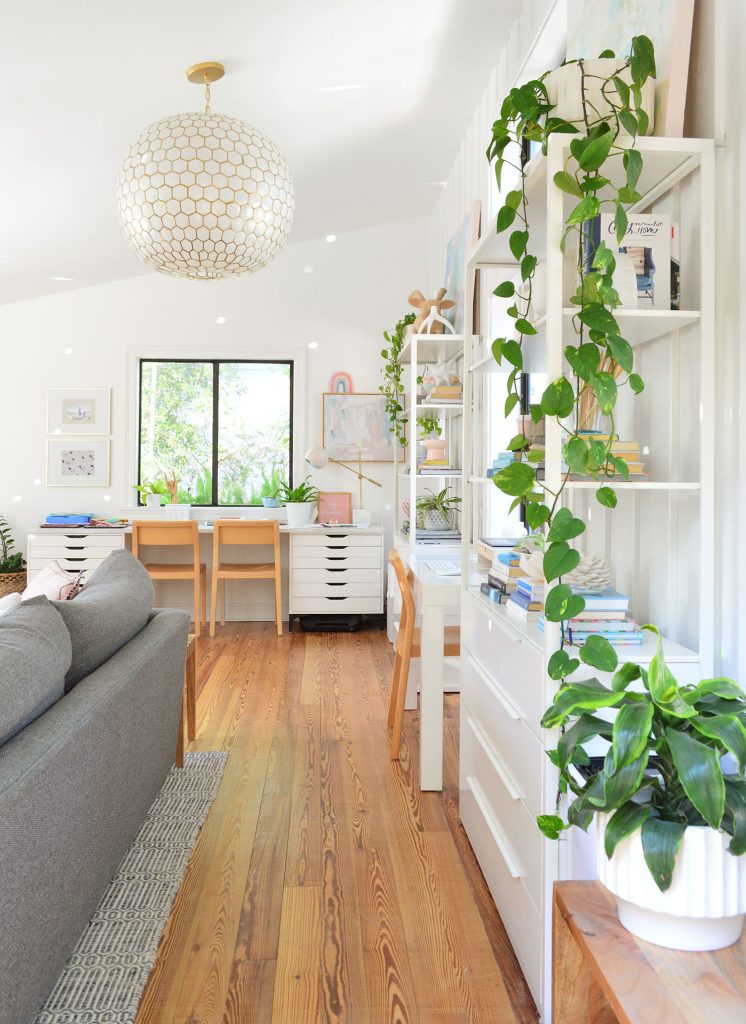
You can see more pictures of our home in our SW Pure White deep dive post. We find it to be an incredibly versatile white that works in tons of various lighting situations (our rooms face all directions – North, South, East, and West – and it’s great).
Benjamin Moore Swiss Coffee (OC-45)
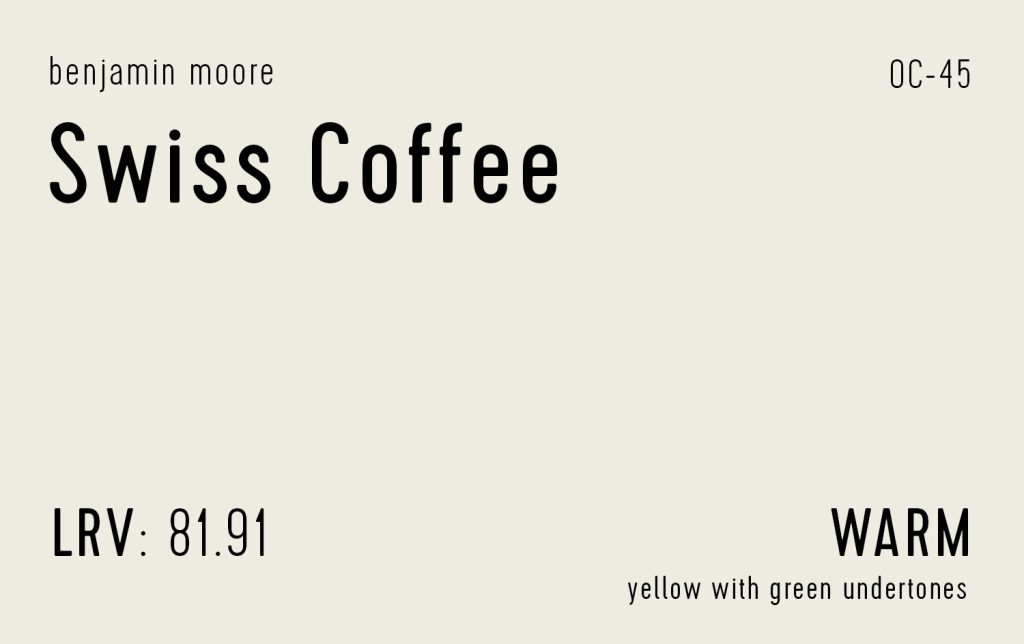
BM Swiss Coffee is the first unmistakably warm off-white paint color on this list. It is a beautiful color, but won’t look like a clean white in most circumstances. Despite being the lowest LRV on this list, it is still a great way to bring brightness to a space, while preserving a warm cozy feel. It can work on trim and doors as well, but it will require you to use warm wall colors as well, so they don’t clash.
Farrow & Ball All White (No. 2005)
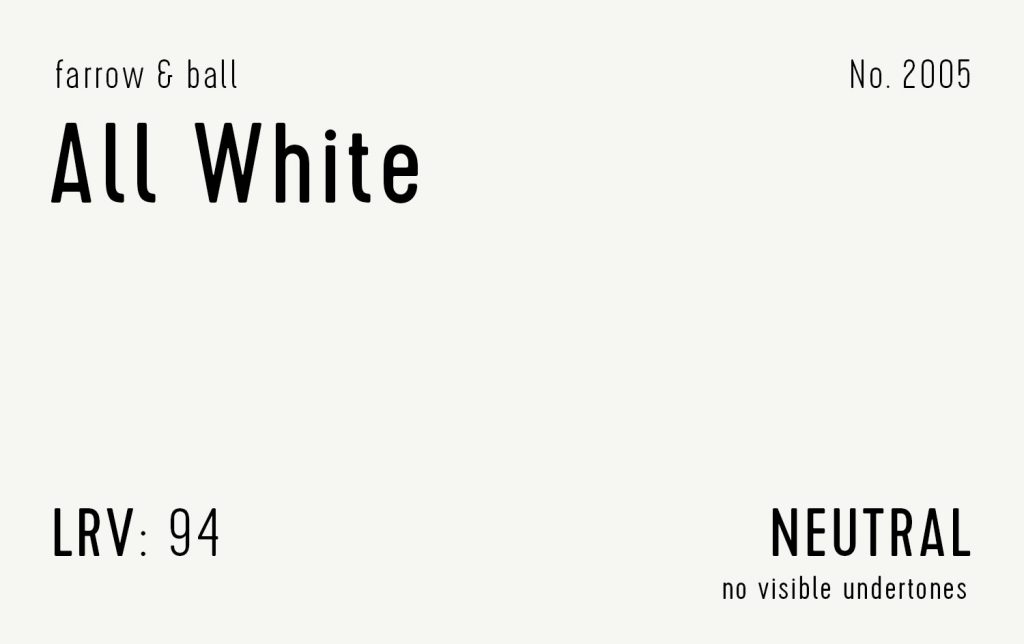
Farrow & Ball All White is the whitest and brightest paint color on this list. It has the highest LRV and claims to have no added pigments, meaning it has no visible undertones. This makes it great for trim, ceilings, and other surfaces where want a bright white tone, but it may be too blindingly bright on walls for some people and in some rooms.
Sherwin-Williams Extra White (SW 7003)
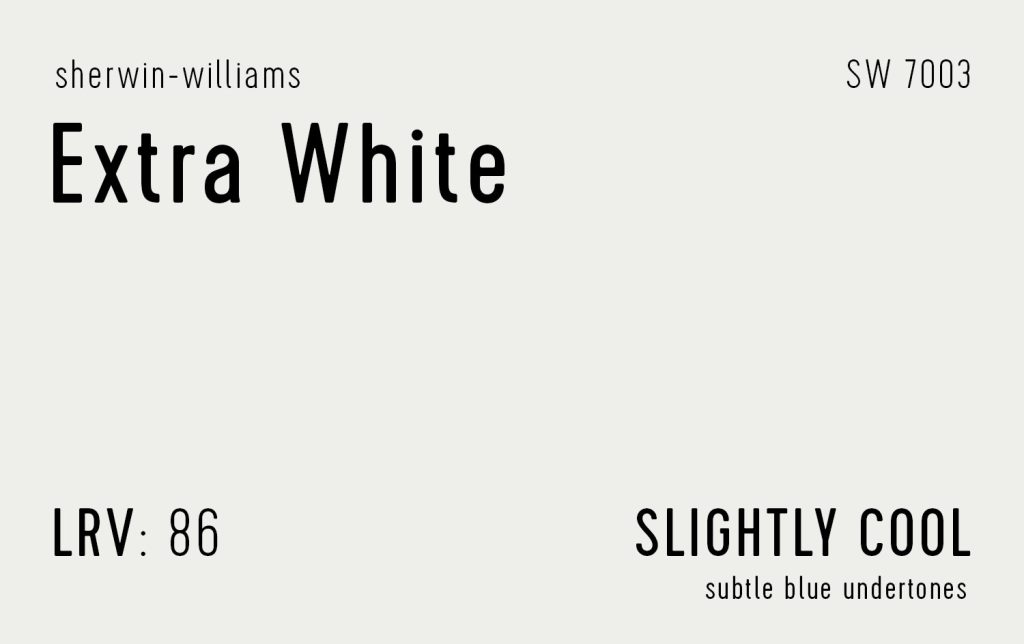
SW Extra White is a versatile white that skews slightly cool. In the lists we reviewed, its undertones were described as everything from blue & gray to yellow & green. This speaks to their subtly, meaning it pairs well with lots of other colors and lighting situations.
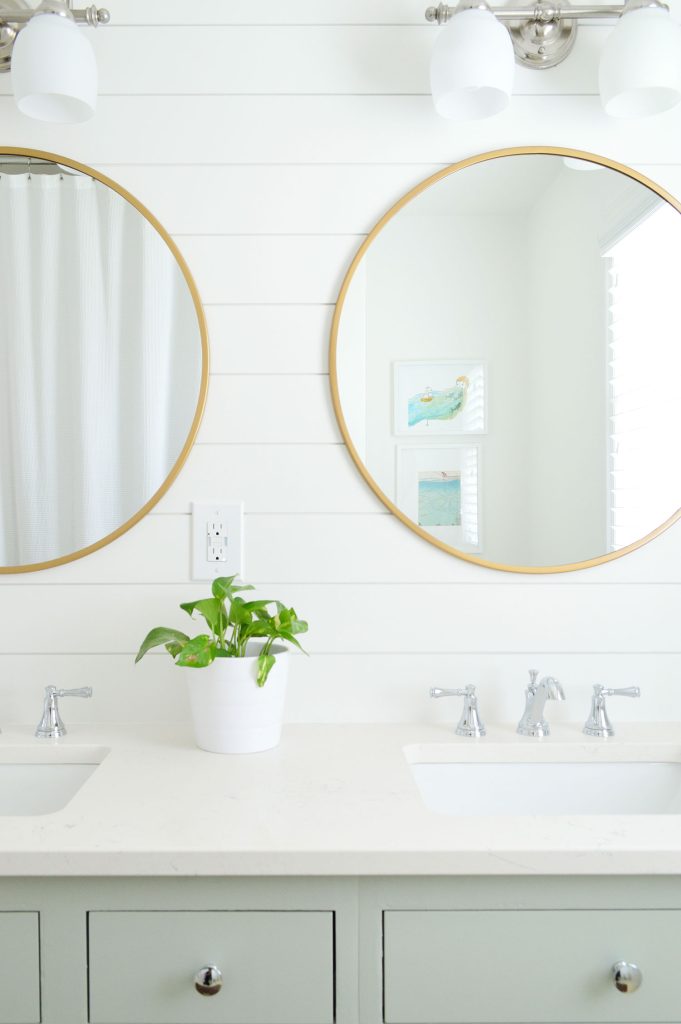
It’s 87 LRV makes it a mid-brightness white, making it equally suitable for walls or trim. You can see how we used it as both in our Extra White color review post.
Sherwin-Williams Alabaster (SW 7008)
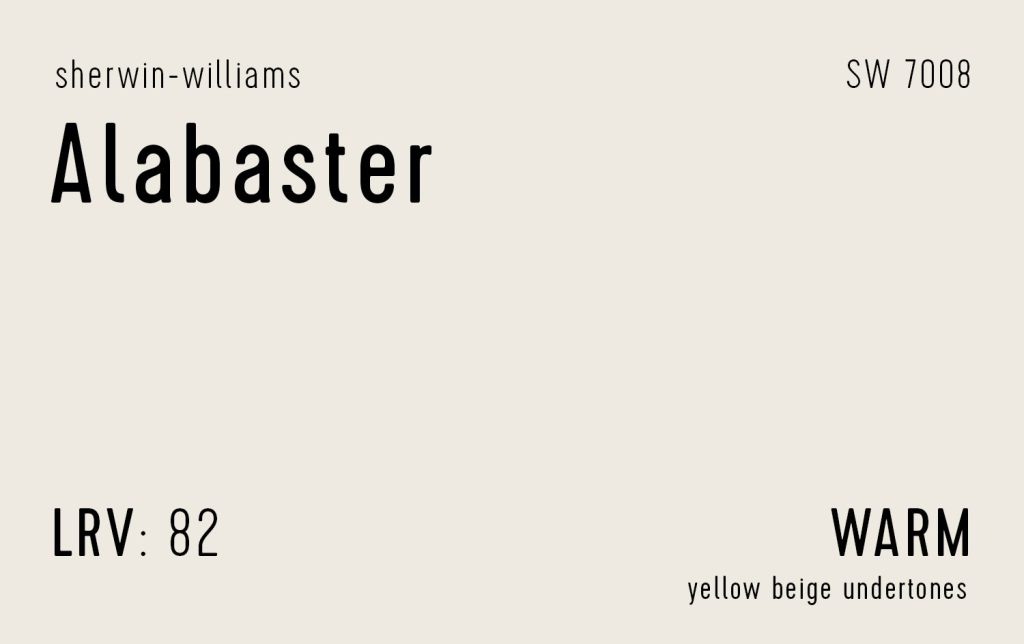
SW Alabaster is similar to Benjamin Moore’s Swiss Coffee, listed a few colors above this one. It also reads a creamy off-white in most cases, although it’s a bit redder than Swiss Coffee. Alabaster is possibly the warmest white on this list. It’s a sophisticated subtle beige, but it should be paired with other warm tones. It was also named Sherwin-William’s 2016 Color of the Year (the same year Benjamin Moore picked another white on this list: Simply White). See more Color of the Year picks.
Farrow & Ball Pointing (No. 2003)
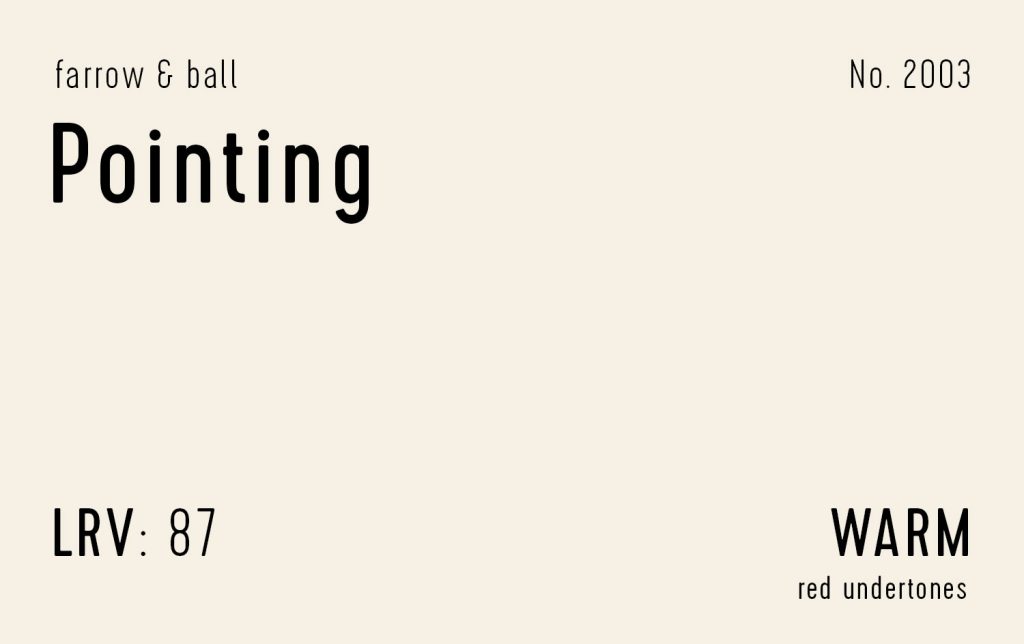
Farrow & Ball Pointing is another decidedly warm white, like Swiss Coffee and Alabaster. It is noticeably brighter than the other two, making it a better option for a warm white trim or ceiling tone. Its name comes from the term for applying mortar between bricks, which is a nod to the red undertones in the paint.
Sherwin-Williams Snowbound (SW 7004)
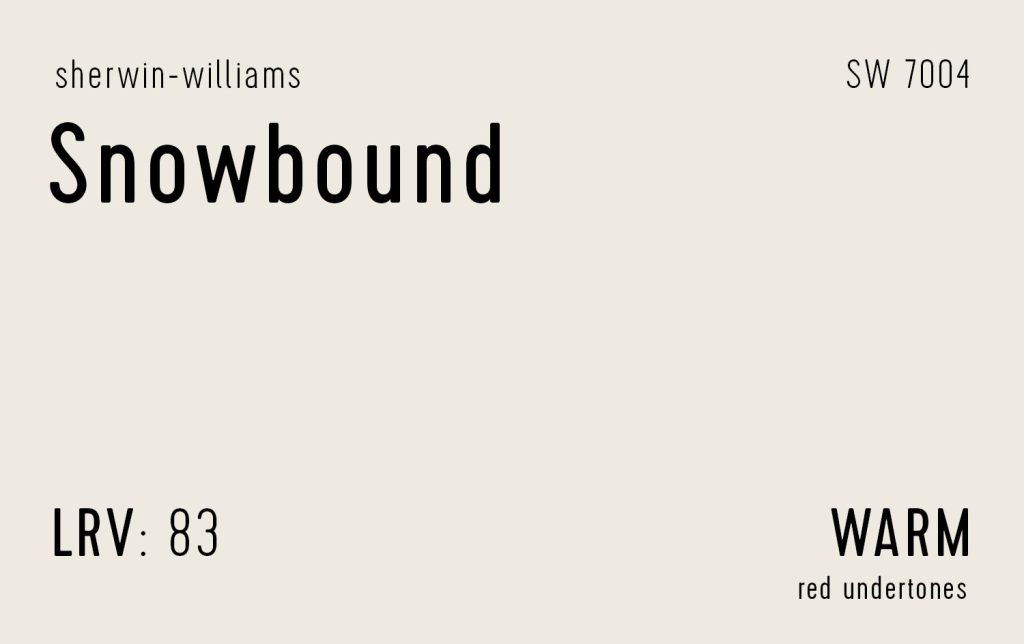
SW Snowbound finishes out this list with yet another distinctly warm white. It skews more red than yellow, like many of the others, which is why we used it as the exterior trim color for our red brick house. As you can see below, it still gave the appearance of a bright, clean white – especially outside where whites tend to look even brighter (sometimes a paint color with too high of an LRV will look blinding outside).
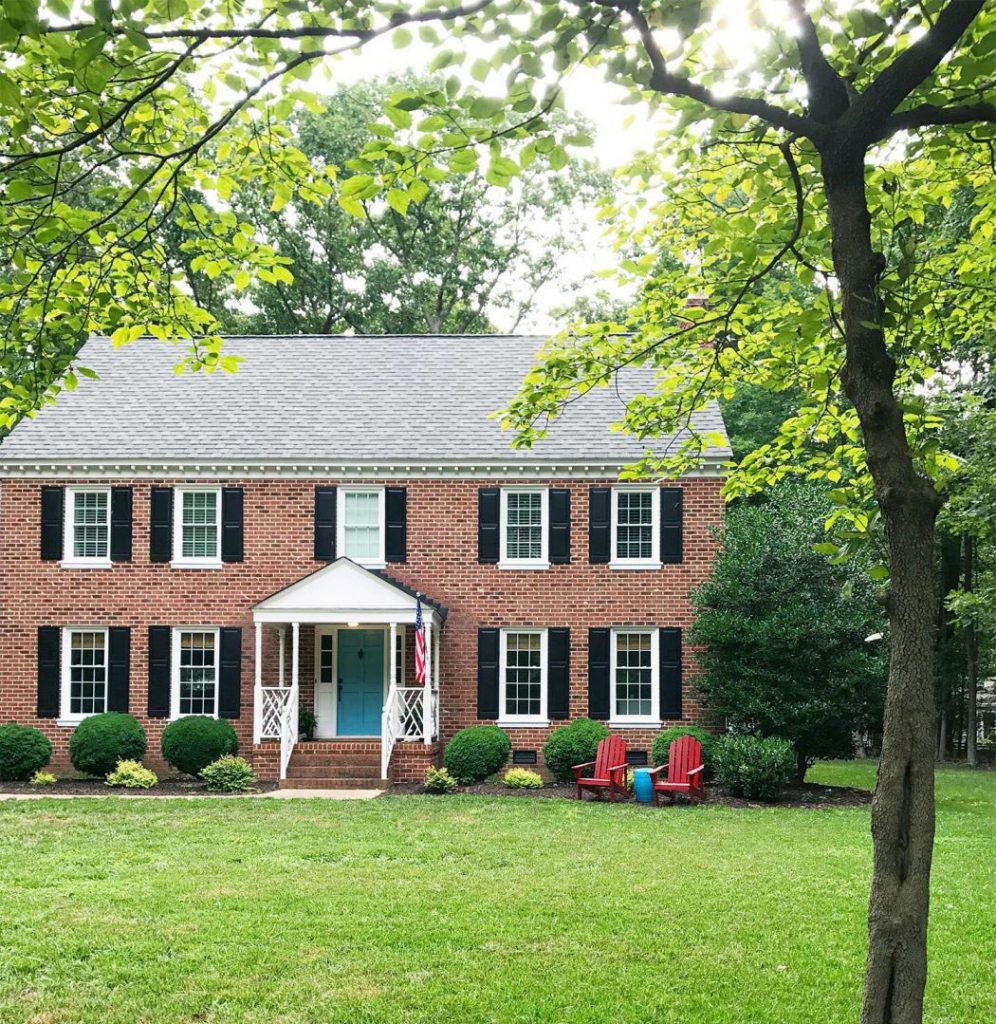
Our use of Snowbound for the trim of our brick house is a good example of choosing a white with similar undertones to any surrounding colors or decor. Had we chosen a cool white on this home, it likely would’ve clashed or looked gray against the brick. Because Snowbound has a complementing undertone to the brick, its redness practically disappears and leaves you with the look of neutral white.
Other White Paint Considerations
Here are some other things to keep in mind while you’re picking the right white paint color for your room.
Don’t trust pictures online. Every screen renders color and brightness differently, so don’t expect what you see in a room online to represent the real world. That’s why it’s always important to view swatches in real life, in your real spaces.
White walls can reflect other colors in the space. The higher a paint’s LRV, the more reflective it becomes. This means nearby hues (a bright rug, colorful accent wall, lush greenery outside) may be cast onto your white walls, changing their appearance throughout the day. This can add to the dynamic nature of white walls, but you may want to consider a lower LRV paint color if this concerns you.
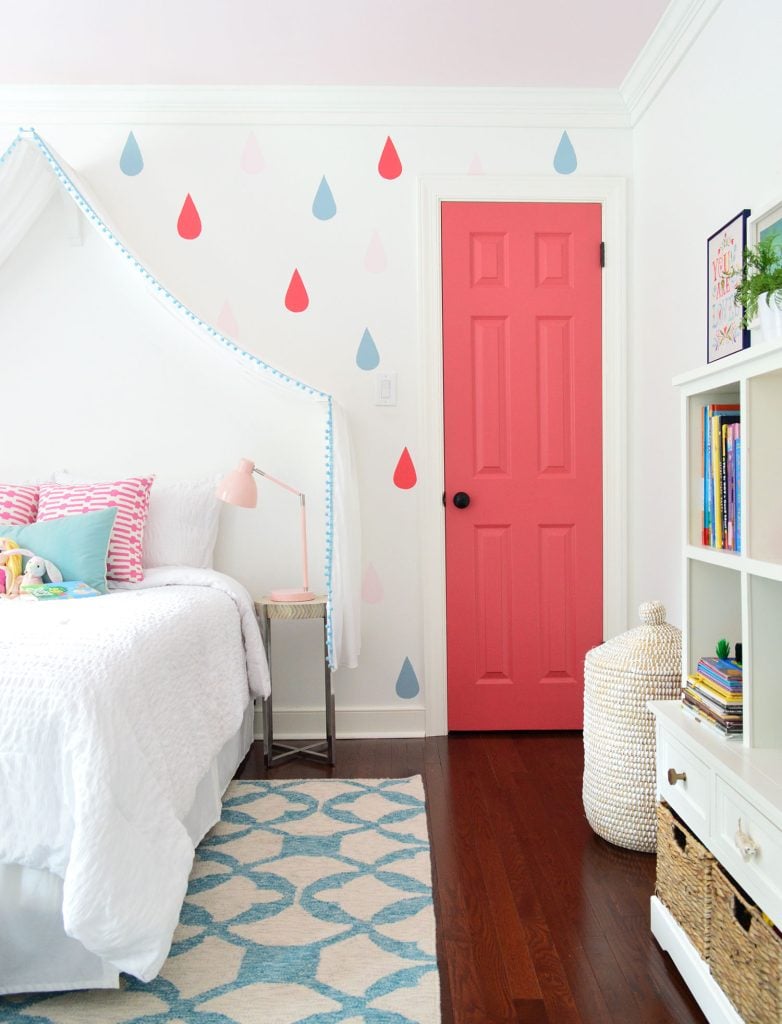
Consider the direction your windows face. North-facing rooms tend to get cooler indirect light, while South-facing spaces get warmer, direct sunlight. East- and West-facing rooms get a mix of these depending on the time of day. Keep that in mind when evaluating undertones. Warmer whites can help balance out cool rooms. Cooler whites won’t skew as yellow in warm rooms.
Remember your light bulbs. Light bulbs give warm or cool light. Fluorescent or “daylight” bulbs give off cool light, while “soft white” or “warm white” bulbs are warm or yellow. Our best LED light bulb deep dive has more details. Artificial light can alter the look of your white wall, so be sure to view swatches at night with the lights on too.
White paint colors can get too white outside. Direct sunlight makes any paint color appear brighter, so experts typically recommend lower LRV whites for exterior use. We used SW Moderne White for the exterior of our house – and we love how it looks. It’s a softer warm white with an LRV of 74.
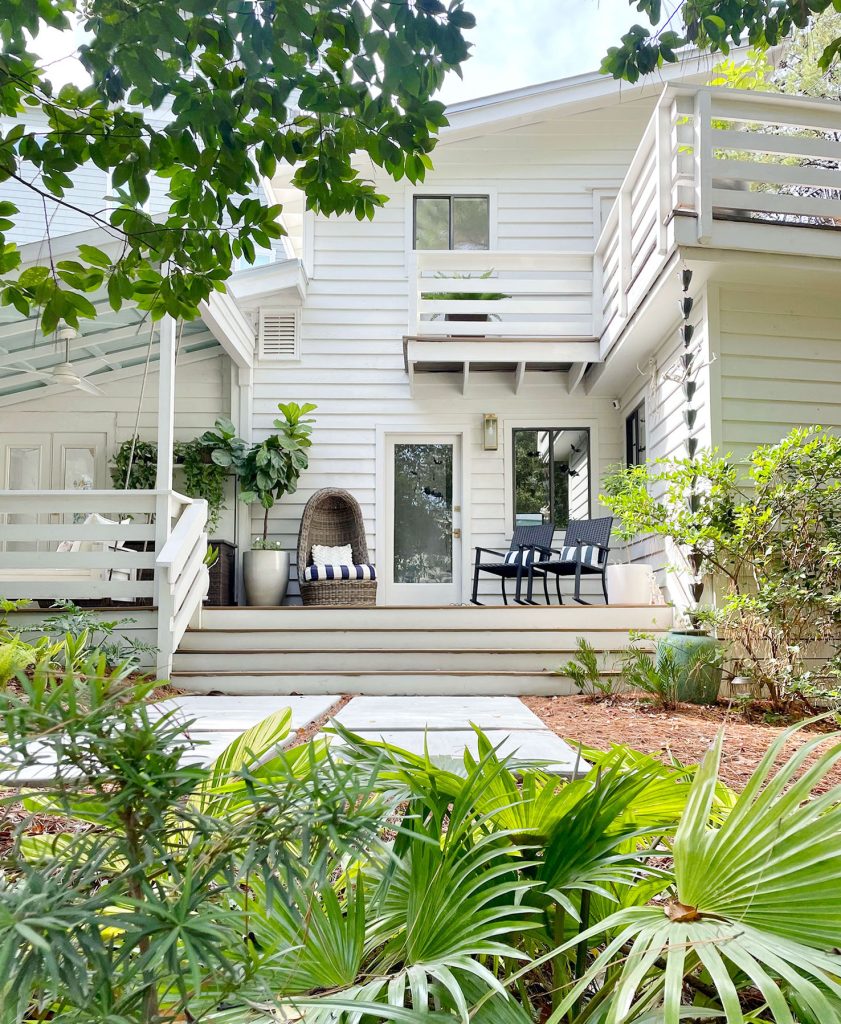
Be careful when pairing white paint colors together. White paints can easily clash, especially if they have contrasting undertones. For example, a subtle yellow undertone on your wall will look more pronounced next to cool white trim. Be sure to test both swatches together before proceeding.
Other White Paint FAQs
Let’s wrap this up with some final thoughts and rapid-response frequently asked questions about white paints.
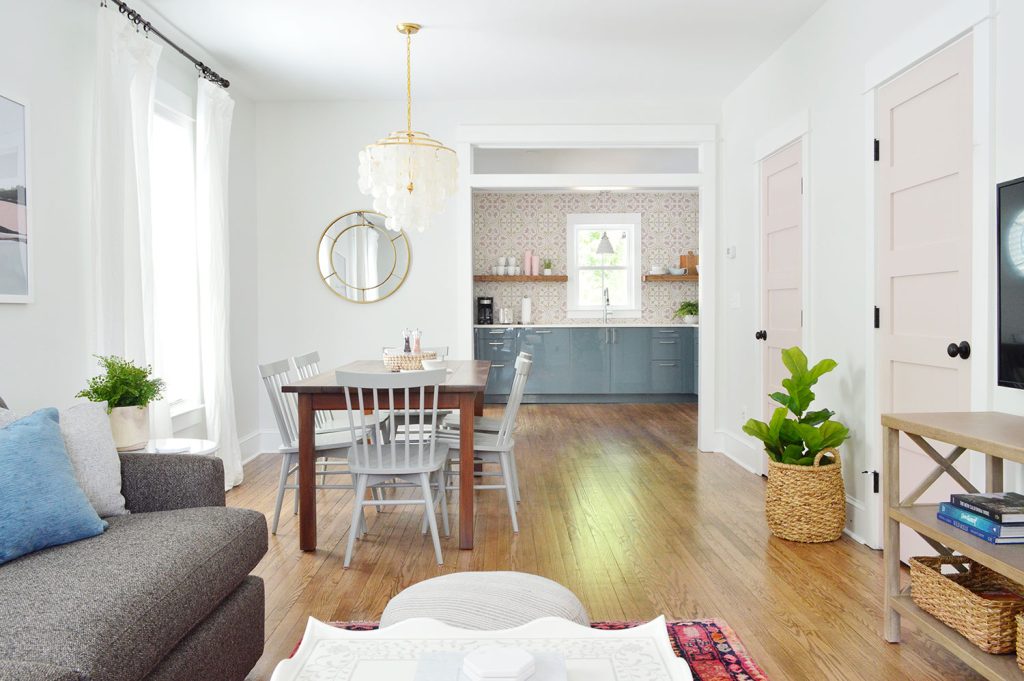
What is the most popular white paint color?
The overall most popular white paint color is Benjamin Moore White Dove. The most popular white paint color from Sherwin-Williams is Pure White.
What white paint color is best for trim?
Sherwin-Williams Extra White and Benjamin Moore Chantilly Lace are very popular as trim colors. Each has a bright neutral undertone that pairs well with many colors. However, any paint listed here can be used on trim, especially if you are using that same color on your walls. You can use contrasting sheens to create subtle contrast, like eggshell walls and semi-gloss trim and doors.
What white paint color is best for ceilings?
Benjamin Moore Super White and Benjamin Moore Decorator’s White are great white paint colors for the ceiling. However, if you are painting your walls white, it’s usually best to continue that same white color onto the ceiling as well. It’s recommended that you use a flat or matte paint finish on ceilings.
Can I color match white paint across brands?
Generally, matching paints across brands is not recommended. Manufacturers use different bases and pigments to mix their paints, so you won’t be able to perfectly recreate a Benjamin Moore color at a Sherwin-Williams store (or vice versa). We recently heard that paint colors can be anywhere from 10-17% inaccurate when matched, so it seems like a pretty big gamble that could potentially backfire.
What are other popular white paint colors?
After these top 12, the next most-mentioned white paint colors we saw on the lists we reviewed were:
What is the brightest white paint?
Some of the brightest white paints available are Farrow & Ball All White (LRV 94), Behr Ultra Pure White (LRV 95), and Sherwin-Williams High Reflective White (LRV 93).
What are the best cool white colors?
Benjamin Moore Decorator’s White, Benjamin Moore Super White, and Sherwin-Williams Extra White are the top white paints with slightly cool undertones.
What are the best warm white paint colors?
The top picks from the experts for warm white paints are Benjamin Moore Simply White, Benjamin Moore Swiss Coffee, Sherwin-Williams Alabaster, and Farrow & Ball Pointing. Also appearing on many expert lists are Benjamin Moore Cloud White and Sherwin-Williams Shoji White.
More Paint Colors We Love
You can check out more of our favorite go-to paint colors by touring our homes in the menu at the top of our blog. We’ve also written these detailed deep-dive posts about our favorite paints:
*This post contains affiliate links, so we may earn a small commission when you make a purchase through links on our site at no additional cost to you.
